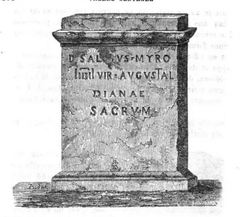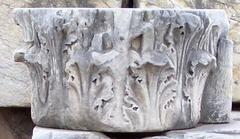
Sant’Orso in Aosta: Visiting Hours, Tickets, and Historic Sites Guide
Date: 04/07/2025
Introduction
Sant’Orso, in the heart of the Aosta Valley, Italy, is a monument of profound historical and cultural significance. This extraordinary site encapsulates over a millennium of religious devotion, artistic evolution, and vibrant Alpine traditions. From its early Christian origins to its celebrated Romanesque cloister and lively annual fair, Sant’Orso stands as a testament to the enduring spirit and communal identity of the region (balteus.lovevda.it, Santi e Beati).
This guide provides detailed insights into Sant’Orso’s history, visitor information (including visiting hours and ticketing), accessibility, travel tips, and the immersive experience of the Fiera di Sant’Orso. Whether you are a history enthusiast, art lover, pilgrim, or curious traveler, Sant’Orso offers a captivating window into the Aosta Valley’s rich heritage.
Historical Overview
Early Christian Origins and Archaeological Foundations
Sant’Orso’s origins trace back to the 4th and 5th centuries CE, when the site formed part of a large extra-urban necropolis. Archaeological excavations have revealed the foundations of an early funerary building and church, serving as a privileged burial ground for the Christian community (balteus.lovevda.it). The cruciform church of San Lorenzo, nearby, further highlights the area’s importance as a spiritual center from the late Roman period.
Medieval Transformation: Romanesque and Gothic Influences
The most significant transformation occurred in the Romanesque period, primarily in the 11th and 12th centuries. The current collegiate church and its renowned cloister date to this era, with the cloister attributed to Provençal or Lombard craftsmen and completed in 1133. The cloister’s marble capitals are intricately carved, depicting biblical narratives, local legends, and imaginative motifs—outstanding examples of Romanesque religious sculpture in the Alpine region (italiabsolutely.com).
Enhancements in the late 15th and early 16th centuries, under George of Challant, brought Renaissance and Gothic elements, including a luxurious priory, reflecting the site’s growing religious and social prominence.
Artistic and Liturgical Highlights
The Sator Square Mosaic
A unique 12th-century floor mosaic in the choir area features the Sator Square—a palindromic Latin phrase symbolizing divine protection—surrounding an image of Samson slaying the lion. This rare ecclesiastical feature likely served a liturgical-apotropaic function (indaginiemisteri.it).
Frescoes and Wooden Choir
The church houses an 11th-century cycle of Ottonian frescoes (some of the oldest in the region) and a 15th-century wooden choir, both masterpieces of medieval craftsmanship (balteus.lovevda.it).
The Cloister: Centerpiece of Romanesque Sculpture
The 12th-century cloister boasts marble capitals with scenes from the Old and New Testaments, episodes from the life of Saint Orso, fantastical animals, and decorative motifs. Designed to foster contemplation, its enduring beauty attracts scholars and tourists alike (evendo.com).
Sant’Orso’s Role in Aosta’s Development
Located near the ancient Roman city Augusta Praetoria, Sant’Orso became a nucleus of religious, cultural, and social activity, shaping Aosta’s medieval urban landscape (balteus.lovevda.it).
The Legacy of Saint Orso (Saint Ursus)
Dedicated to Saint Orso, a priest renowned for his acts of charity and miracles, the site remains a focal point of local religious identity. His veneration culminates annually in the Fiera di Sant’Orso, celebrating local craftsmanship and communal spirit (novarseti.com).
Visitor Information
Visiting Hours
- April to October: 9:00 AM – 6:00 PM
- November to March: 9:00 AM – 4:30 PM
- Note: Hours may vary during holidays or special events; always check the official website before your visit.
Tickets and Admission
- Church and Cloister: Entry is generally free; guided tours and access to special areas (crypt, attic frescoes) may require a small fee.
- Guided Tours: Available in multiple languages; booking in advance is recommended, especially during peak periods.
- Discounts: Reduced rates for students, seniors; children under 12 often enter free.
Accessibility
- Wheelchair Access: The main areas (church, cloister) are accessible; some sections, such as the crypt and certain archaeological areas, have limited access.
- Assistance: Available upon request; contact the site for specific needs.
Getting There and Travel Tips
- Location: The Sant’Orso complex is centrally located in Aosta, within walking distance from the main square and key Roman monuments.
- By Train/Bus: Aosta is accessible by train and bus from major cities; the site is a 10–15-minute walk from the station.
- Parking: Limited near the church; public lots are a short walk away.
- Nearby Attractions: Roman Theatre, Arch of Augustus, and Aosta Cathedral.
Tips for Visitors
- Wear comfortable shoes for exploring cobblestone streets.
- Photography (without flash) is permitted except in areas with fragile frescoes.
- Visit early or late in the day to avoid crowds, especially during the Sant’Orso Fair.
The Sant’Orso Fair: A Millennial Tradition
Historical Origins
The Fiera di Sant’Orso, celebrated every January 30 and 31, is one of Europe’s oldest folk festivals, its origins dating back over a thousand years (Club Esse). Initially a charitable distribution by Saint Orso, it has evolved into a grand showcase of regional craftsmanship (La Saint Ours).
A Living Tradition
Over 1,000 artisans display woodwork, stone, wrought iron, leather, and textiles in Aosta’s historic center. The atmosphere is festive, with folk music, dance, and the “Veillà”—an all-night communal gathering on January 30 (Italia.it).
Visiting the Fair
- Dates: January 30–31 (preview on January 29)
- Hours: 8:00 AM – 7:00 PM; “Veillà” extends late into the night on January 30.
- Admission: Free of charge.
- Accessibility: The fair area is pedestrianized and accessible; family-friendly workshops available.
What to Expect
- Early mornings are less crowded.
- Book accommodation in advance.
- Sample local dishes like polenta concia and seupa à la vapelenentse.
- Interactive artisan demonstrations and competitions enliven the fair.
Artistic and Architectural Heritage
The Sant’Orso complex is a microcosm of Alpine artistic evolution. Highlights include:
- Romanesque Cloister: 37 marble capitals with biblical and local scenes.
- 11th-Century Frescoes: Among the oldest in the region.
- 15th-Century Wooden Choir: A masterpiece of medieval craftsmanship.
- Bell Tower: Romanesque structure dating to 989, with 12th-century additions.
The adjacent priory, completed by Georges de Challant, blends Renaissance and Gothic elements, reflecting Aosta’s openness to broader artistic currents (LoveVDA).
Symbolism, Iconography, and Legacy
Saint Orso is often depicted with a staff and a sparrow, highlighting his humility and kindness. The site’s architecture and decoration are rich in symbolic detail, reinforcing the values of charity, humility, and community (Santi e Beati).
His cult spread beyond Aosta into neighboring regions, attesting to his significance across the Alps, especially along the historic Via Francigena pilgrimage route (LoveVDA).
Unique Features and Photographic Spots
- Cloister Capitals: Capture the intricate Romanesque carvings.
- Bell Tower: A prominent city landmark.
- Frescoes: Medieval mural paintings in the church and priory.
- During the Fair: Artisan stalls and festive crowds offer vibrant photo opportunities.
Frequently Asked Questions (FAQ)
What are Sant’Orso’s visiting hours?
April–October: 9:00 AM–6:00 PM; November–March: 9:00 AM–4:30 PM. Verify on the official website for updates.
Are tickets required?
Entry to the church and cloister is generally free; guided tours and special areas may have fees.
Is Sant’Orso wheelchair accessible?
Main areas are accessible; crypt and attic frescoes may have limited access.
When is the Sant’Orso Fair held?
Annually on January 30 and 31.
How do I get to Sant’Orso from the Aosta train station?
A 10–15-minute walk or a short bus ride to the Bourg Saint Ours quarter.
Visuals and Media Suggestions
Add high-quality images of the cloister capitals, Sator Square mosaic, bell tower, and festive fair scenes. Use descriptive alt tags such as “Romanesque marble capitals in Sant’Orso cloister, Aosta” and “Sant’Orso Fair artisan stalls in Aosta”. Virtual tours and interactive maps enhance the visitor experience.
Conclusion
Sant’Orso in Aosta embodies the harmonious blend of history, spirituality, artistry, and living tradition that defines the Aosta Valley. Its collegiate church, cloister, and priory narrate a story of evolving devotion and artistic achievement, further enlivened by the millennial Sant’Orso Fair (balteus.lovevda.it, italiabsolutely.com). Visitors are invited not only to explore architectural wonders and artistic treasures, but also to participate in a living heritage that continues to shape the local community.
For the latest updates, ticket bookings, and travel tips, download the Audiala app and follow official channels. Whether you seek historical insight, artistic inspiration, or a lively cultural celebration, Sant’Orso stands as an unforgettable Alpine destination (Club Esse, La Saint Ours).
Call to Action
Download the Audiala app for up-to-date visiting hours, ticketing, and interactive maps of Sant’Orso and other Aosta Valley sites. Explore related articles, follow us on social media, and start planning your journey into Aosta’s rich cultural heritage today!
Internal Links
Sources
- Collegiate Church and Cloister of Saint Orso, 2024, balteus.lovevda.it (balteus.lovevda.it)
- Sant’Orso in Aosta: Visiting Hours, Tickets, and the Rich Cultural Heritage of a Historic Site, 2024, Santi e Beati & LoveVDA (Santi e Beati, LoveVDA)
- Sant’Orso Fair in Aosta: Visiting Hours, Tickets & What to Expect, 2024, Club Esse & La Saint Ours (Club Esse, La Saint Ours)
- Aosta’s Roman Heritage and Traditions, 2024, italiabsolutely.com (italiabsolutely.com)
- The Sator Square: Historical and Liturgical Significance, 2024, indaginiemisteri.it (indaginiemisteri.it)
- Parrocchia Sant’Orso Official Website, 2024 (parrocchiasantorso.it)
- Official Aosta Valley Tourism, 2024 (lovevda.it)
- Sant’Orso Fair Official Website and Program, 2024 (lasaintours.it)
- Guide Turistica Aosta: Sant’Orso, 2024 (guidaturisticaosta.it)







